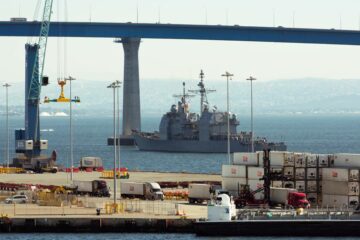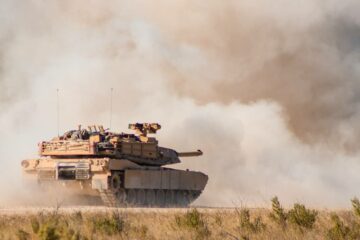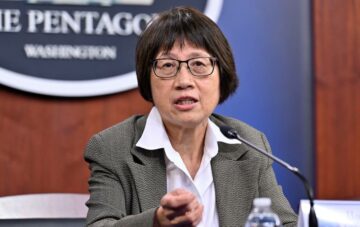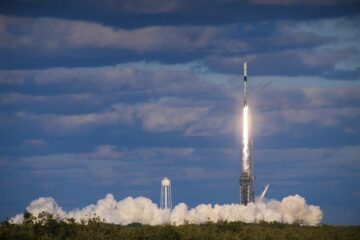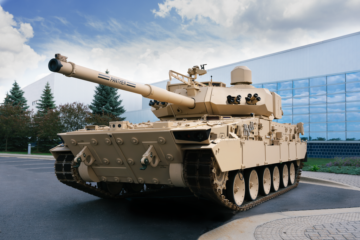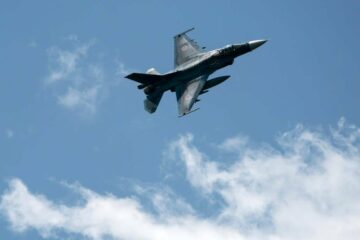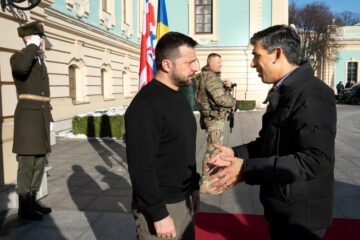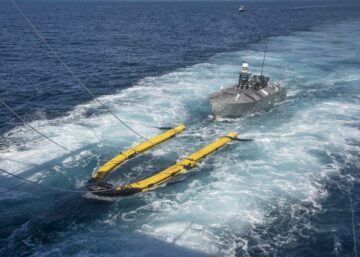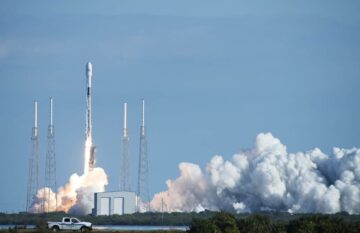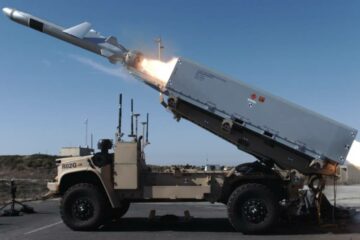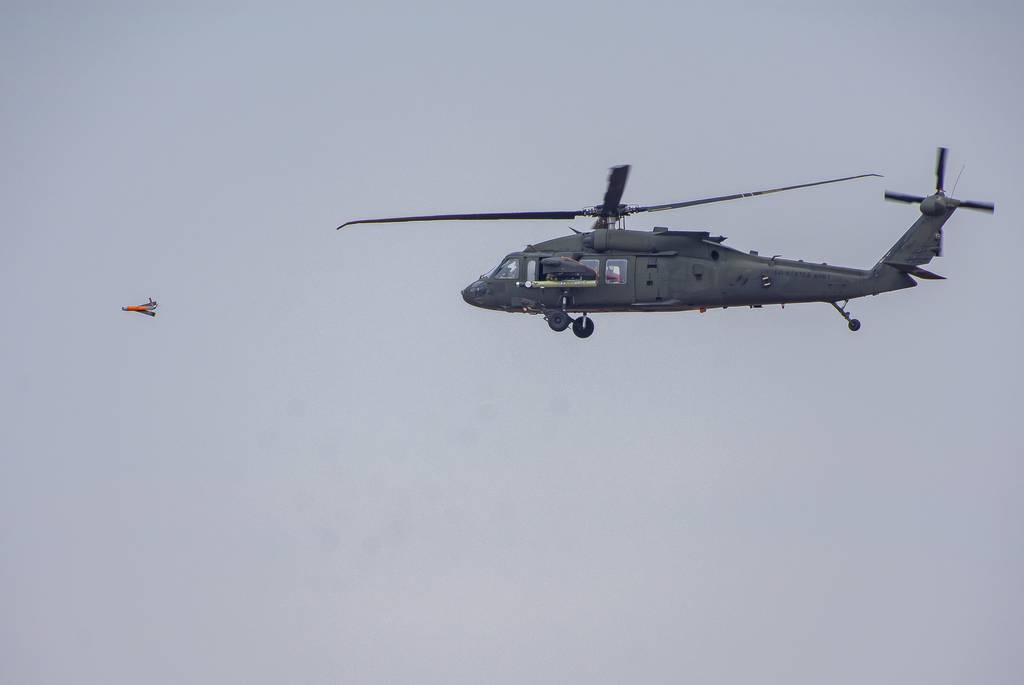
HUNTSVILLE, Ala. — The U.S. Army is speeding up its plan to procure launched effects capable of flying at different ranges and deploying from a variety of air and ground vehicles.
With cancellation of the Army’s manned Future Attack Reconnaissance Aircraft, the service has more funding to pursue launched effects, a major unmanned element of a modernized aerial tier that will be able to deliver capabilities such as targeting, reconnaissance, surveillance, network extension and lethality in a complex environment.
The Army has added resources that are enabling the Future Vertical Lift cross-functional team and Program Executive Office Aviation to integrate additional payloads on its unmanned aircraft and launched effects and shift some scheduling for acquiring capability — like a long-range launched effect platform — more quickly, program executive officer Army aviation, Brig. Gen David Phillips, said at the Association of the U.S. Army’s Global Force Symposium.
A year ago, the strategy was still murky. The Army was considering several size classes for launched effects and was prototyping the first version of a small capability. This version was meant to help the service decide how to procure and employ these systems on the battlefield.
The medium-range launched effects prototype is the result of a contributions from five companies that teamed up.
In 2020, the service selected 10 companies to provide mature launched effects technologies. From those, the Army then chose five companies in early 2023 to come together to build a prototype with each bringing a different element to the system.
Anduril Industries is providing the air vehicle. The company purchased Area-I, the original developer of the Altius 700 vehicle, in 2021. The Altius 700 has been in use by the Army to evaluate launched effects for over five years. Collins Aerospace, a Raytheon Technologies company, is the mission system provider, and Aurora Flight Sciences is the system integrator. Technology Service Corp. and Northrop Grumman Information Systems are providing modular payloads.
The Army still plans to wrap up evaluation of the prototypes in September and will then weigh a number of options, from rapid fielding to low-rate initial production to more prototyping, according to the Army’ project manager for uncrewed aircraft systems, COL Danielle Medaglia.
But the Army is also working on a short-range LE and a long-range version.
During recent experimentation and demonstration, the Army validated that even flying about 30 to 45 knots, it was still able to “successfully see launched effects as being a major contributor as a sensor on the battlefield,” said Brig. Gen. Cain Baker, who leads the Army’s aviation modernization efforts.
The service held an industry day in February for launched effects with a large turnout.
The Army will hold an operational demonstration at the end of fiscal 2024 of its medium-range LE prototype followed by more integration efforts on the platform to get after a fielding decision, Medaglia said.
The service released a request for proposals last week for short-range LE. It plans to begin the prototyping process for that effort in earnest in early FY25 and will continue through FY29. The Army will begin short-range LE production beginning in late FY26.
The plan is to select at least two vendors to provide short-range effects, Medaglia said, because the industry is saturated in capabilities in the category.
And while just a few short weeks ago the Army had yet to secure funding for long-range LE, money now exists to move on the effort, Medaglia said. The long-range version is considered more of a Corps level asset and prototyping will begin to develop the capability at the tail end of FY25 with production beginning at the start of FY27.
“That is fast,” she said, but the effort is underpinned by an open architecture approach. “We’re not compromising on that open system approach because of the capabilities that we need; we don’t know what we might need in FY28. We might get a non-traditional threat.”
The launched effects will also all be controlled by the same controller and that will be the same as is used for other UAS and for ground robots too, she added.
UAS is “a wide open space, we will not be vendor locked, whether it’s the air vehicle, whether its payload, whether it’s mission system,” Medaglia said.
The Army plans to focus heavily at its aviation demonstration event EDGE in the fall on its launched effects capabilities. Some LEs will focus on countering aviation threats, others on maneuver threats and others on intel threats.
“We want you to show up with your payloads, your devices, your software and then we’ll give you the mission task and say, ‘Hey, let’s see what you can do against these high-end threats to really get a sense of where we are inside the industry on capability,” Baker said.
Jen Judson is an award-winning journalist covering land warfare for Defense News. She has also worked for Politico and Inside Defense. She holds a Master of Science degree in journalism from Boston University and a Bachelor of Arts degree from Kenyon College.
- SEO Powered Content & PR Distribution. Get Amplified Today.
- PlatoData.Network Vertical Generative Ai. Empower Yourself. Access Here.
- PlatoAiStream. Web3 Intelligence. Knowledge Amplified. Access Here.
- PlatoESG. Carbon, CleanTech, Energy, Environment, Solar, Waste Management. Access Here.
- PlatoHealth. Biotech and Clinical Trials Intelligence. Access Here.
- Source: https://www.defensenews.com/digital-show-dailies/global-force-symposium/2024/03/26/us-army-leaning-into-launched-effects-for-modernized-battlefield/
- :has
- :is
- :not
- :where
- $UP
- 10
- 2020
- 2021
- 2023
- 2024
- 30
- 45
- 70
- 700
- 8
- a
- Able
- About
- According
- acquiring
- added
- Additional
- Aerospace
- After
- against
- ago
- AIR
- aircraft
- All
- also
- an
- and
- approach
- architecture
- ARE
- Army
- army aviation
- Arts
- AS
- asset
- Association
- At
- attack
- Aurora
- aviation
- award-winning
- baker
- Battlefield
- BE
- because
- been
- begin
- Beginning
- being
- boston
- Boston University
- Bringing
- build
- but
- by
- CAN
- capabilities
- capability
- Category
- chose
- classes
- College
- Collins
- collins aerospace
- come
- Companies
- company
- complex
- compromising
- considered
- considering
- continue
- contributions
- contributor
- controlled
- controller
- Corp
- corps
- countering
- covering
- Danielle
- David
- day
- decide
- decision
- Defense
- Degree
- deliver
- demonstration
- deploying
- develop
- Developer
- Devices
- different
- do
- Dont
- each
- Early
- earnest
- effect
- effects
- effort
- efforts
- element
- enabling
- end
- Environment
- evaluate
- evaluation
- Even
- Event
- executive
- Executive Officer
- exists
- extension
- Fall
- FAST
- February
- few
- First
- Fiscal
- five
- flight
- flying
- Focus
- followed
- For
- Force
- from
- funding
- future
- Gen
- get
- Give
- Global
- Ground
- had
- heavily
- Held
- help
- High-End
- hold
- holds
- How
- How To
- HTTPS
- images
- in
- industry
- information
- Information Systems
- initial
- inside
- integrate
- integration
- Intel
- into
- IT
- ITS
- journalism
- journalist
- jpg
- just
- Know
- Land
- large
- Last
- Late
- launched
- Leads
- least
- Level
- like
- locked
- major
- manager
- master
- mature
- meant
- might
- Mission
- modernization
- modular
- money
- more
- move
- Need
- network
- news
- now
- number
- of
- Office
- Officer
- on
- open
- operational
- Options
- original
- Other
- Others
- over
- plan
- plans
- platform
- plato
- Plato Data Intelligence
- PlatoData
- process
- procure
- Production
- Program
- project
- Proposals
- prototype
- prototypes
- prototyping
- provide
- provider
- providing
- purchased
- pursue
- quickly
- ranges
- rapid
- really
- recent
- released
- request
- Resources
- result
- robots
- s
- Said
- same
- say
- scheduling
- Science
- SCIENCES
- secure
- see
- select
- selected
- sense
- September
- service
- she
- shift
- Short
- show
- Size
- Software
- some
- Space
- start
- Still
- Strategy
- such
- surveillance
- Symposium
- system
- Systems
- targeting
- Task
- team
- teamed
- Technologies
- Technology
- that
- The
- The Future
- then
- These
- this
- those
- threat
- threats
- Through
- tier
- to
- together
- too
- two
- u.s.
- underpinned
- university
- us
- us army
- use
- used
- validated
- variety
- vehicle
- Vehicles
- vendor
- vendors
- version
- vertical
- want
- was
- we
- week
- Weeks
- weigh
- What
- whether
- while
- WHO
- wide
- will
- with
- worked
- working
- wrap
- year
- years
- yet
- you
- Your
- zephyrnet

